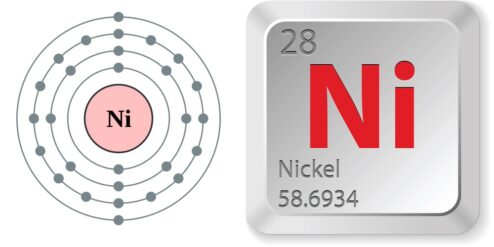Nickel is a naturally occurring, lustrous, silvery-white metallic element. It is the fifth most common element on earth and occurs extensively in the earth’s crust and core. Nickel, along with iron, is also a common element in meteorites and can even be found in small quantities in plants, animals, and seawater. While the amount of nickel in the environment has been increasing due to human activities, including manufacturing and pollution, nickel is an essential element for some species and can be beneficial in small quantities.
Understanding Nickel and Its Common Uses
Nickel is a versatile element used in a wide range of applications. It is a key component in stainless steel, which is widely used in the construction and automotive industries. Nickel’s resistance to corrosion and its ability to withstand high temperatures make it ideal for use in harsh environments. Additionally, nickel is used in batteries, particularly rechargeable ones such as Nickel-Cadmium (NiCd) and Nickel-Metal Hydride (NiMH). It is also used in a variety of other applications, including coinage, plating, and in certain types of glass.
Nickel is also used in many everyday products. It is found in many household items, including kitchen utensils, mobile phones, and jewelry. Nickel is also used in the production of certain food items and can be found in trace amounts in some foods. While nickel is generally safe for most people, some people can develop a sensitivity or allergy to nickel.
Everyday Products: Hidden Sources of Nickel
Nickel is found in a variety of everyday products. One of the most common sources of nickel exposure is through contact with jewelry made from nickel-containing alloys. Other common sources of nickel exposure include coins, keys, eyeglass frames, zippers, and even some types of makeup. Nickel can also be found in certain types of hair dyes and in some tattoo inks.
Nickel can also be found in a variety of household items. It is often used in the production of stainless steel, which is used in many kitchen utensils and appliances. Nickel is also used in the production of certain types of glass, including some types of drinking glasses. Additionally, nickel is used in the production of certain types of batteries, including those used in many electronic devices.
Nickel in Jewelry and Accessories
Nickel is commonly used in jewelry and accessories due to its durability and luster. However, it is also a common cause of contact dermatitis, a skin reaction that occurs in some people who are sensitive to nickel. Symptoms of contact dermatitis can include itching, redness, swelling, and blistering of the skin.
Some people may also experience a reaction to nickel-containing eyeglass frames, earrings, and other accessories. If you are sensitive to nickel, you may want to consider purchasing jewelry and accessories made from nickel-free metals, such as sterling silver or gold.
Nickel Presence in Household Items
Nickel is found in many household items, from kitchen utensils to electronics. In the kitchen, nickel is often found in stainless steel cookware, cutlery, and appliances. It can also be found in certain types of glassware.
In the living room, nickel can be found in electronic devices, including mobile phones, laptops, and remote controls. It is also used in the production of batteries, including those used in many electronic devices.
Nickel in Food and Kitchenware
Nickel can also be found in certain foods and in kitchenware. Foods that are high in nickel include chocolate, nuts, dried fruits, and certain types of fish and shellfish. Additionally, cooking acidic foods in stainless steel cookware can cause nickel to leach into the food.
In the kitchen, nickel is often used in the production of stainless steel cookware and cutlery. It can also be found in certain types of glassware and in some kitchen appliances.
Health Risks Associated with Nickel Exposure
While nickel is generally safe for most people, some people can develop a sensitivity or allergy to nickel. This can lead to contact dermatitis, a skin reaction that can cause itching, redness, swelling, and blistering of the skin.
In rare cases, prolonged exposure to high levels of nickel can lead to more serious health problems, including lung and nasal cancer. Additionally, some studies have suggested that nickel exposure may be linked to heart disease, although more research is needed to confirm this.
While nickel is a common element found in many everyday products, it can cause health problems for some people. If you are sensitive to nickel, it is important to be aware of the potential sources of nickel exposure and to take steps to reduce your exposure. This can include choosing nickel-free jewelry and accessories, using nickel-free cookware, and being aware of the nickel content in certain foods.
Per approfondire:
- Nickel Allergy: A comprehensive guide from the Mayo Clinic on nickel allergies, including symptoms, causes, and treatment options.
- Nickel in Everyday Products: An article from the National Center for Biotechnology Information discussing the prevalence of nickel in everyday products.
- Nickel in Food and Drinking Water: A report from the World Health Organization on the presence of nickel in food and drinking water.
- Nickel Carcinogenesis: An article discussing the potential link between nickel exposure and cancer.
- Nickel and Heart Disease: A study exploring the potential link between nickel exposure and heart disease.


